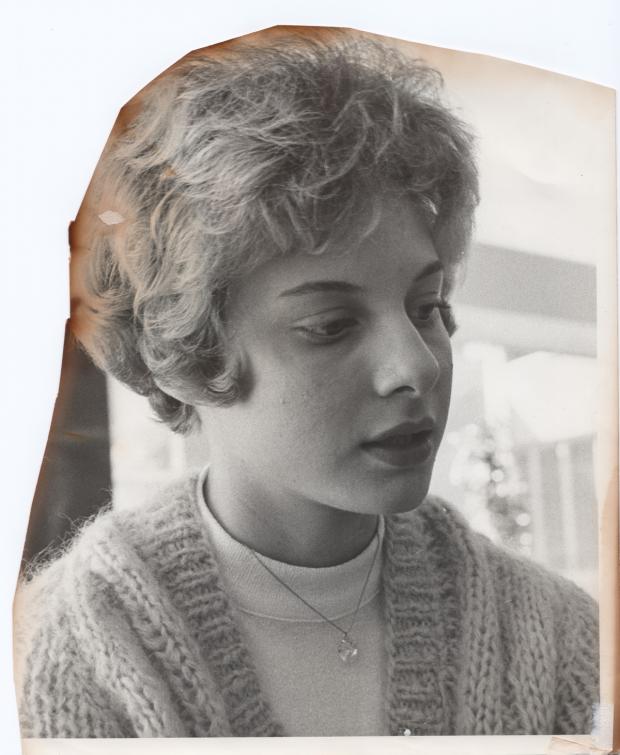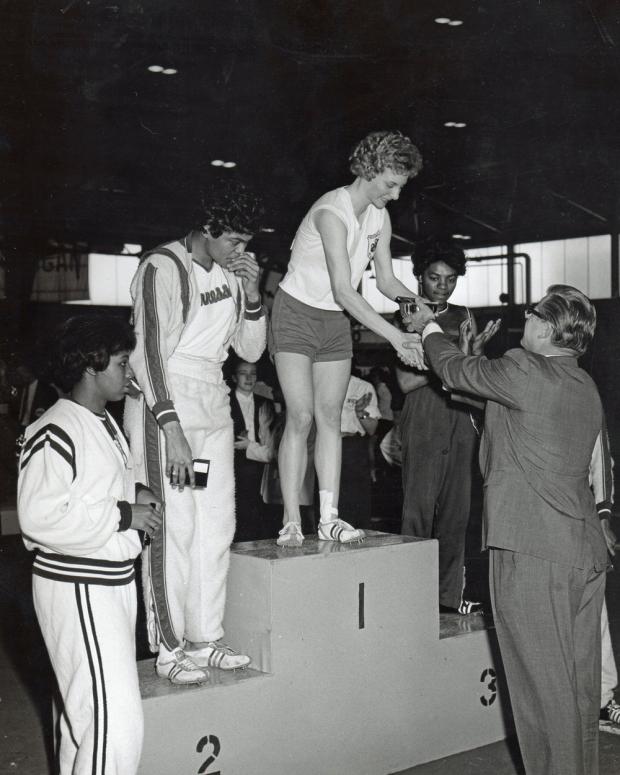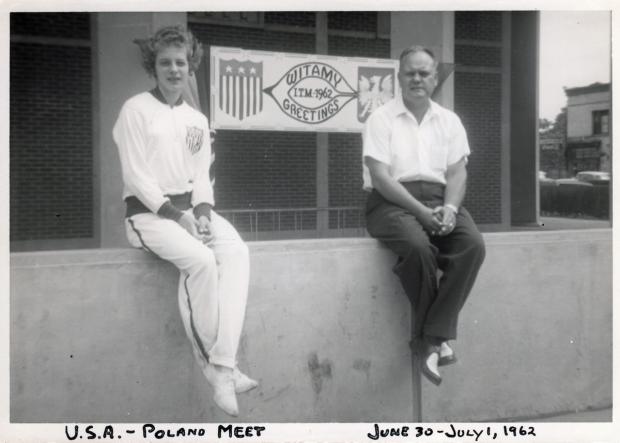Janell Smith's senior picture, rescued from a house fire decades later by a volunteer firefighter who knew who she was and tried to save her memorabilia.
Janell Carson (Smith) has passed away at the age of 73 after a months-long battle with cancer.
But it wasn't always that way.
Janell Smith in her dress uniform prior to the 1964 Tokyo Olympics.
For several years, Janell Smith was one of the best, and best-known, female athletes in the world, including being on the cover of Sports Illustrated. But after she finished her career, she opted instead for the quiet life of a first-grade school teacher, wife, and mother to her three sons. She rarely spoke about her glory years, and when she did, she often left out the details that showed just how incredible she was during that time.
At the height of the Cold War in 1962, she was competing behind the Iron Curtain at the age of 15.
At the age of 17 she joined fellow Kansan
Jim Ryun, also a high school junior, on the U.S. Tokyo Olympic Track and Field team.
Janell Smith on the podium at the at the 1963 AAU National Meet where she tied the American Record for the 70yd hurdles at the age of 15.
She broke the indoor 400 World Record by 1.6 seconds the winter of her senior year of high school at a meet in Berlin, Germany, running 54.0.
One week after she turned 18, she appeared on the cover of Sports Illustrated.
May 10, 1965 Sports Illustrated cover featuring Janell Smith (r) and Marie Mulder (l).
At the age of 18 in 1965, she ran a 52.3 400 on cinder at a meet in Ecuador.
She was a two-time AAU national champion at 440y/400m.
She set multiple American Records in multiple events.
She helped design and select the 1968 U.S. Olympic Team uniforms.
Picture and article about Janell Smith's indoor 400 WR in 1965
And she did it all without a high school or college team in the pre-Title IX era.
You'll notice that there's no mention of state titles. The greatest 400m runner Kansas ever produced never ran in a state meet because there was no state meet for girls. The first girls state meet wasn't held until 1972, seven years after she graduated from high school.
She won two NAIA national indoor titles in college despite Emporia State University not having a women's team.
Janell Smith with her coach/father, Meade, at the U.S. v. Poland meet in 1962. She was 15 years old.
She is survived by her husband, Mike, three sons Brian, Scott and Tim, and multiple grandchildren.
George,
Thanks for the information on Janell Smith. When I was in high school in socal we would go to all the big indoor meets in LA... All were held in the LA Sports Arena near the LA Coliseum.
There were two big events... The LA Times Meet and the Sunkist Meet.
All had big time international athletes representing. No doubt the glory years of track in this country.
I remember seeing Janell compete in one of those meets . Interesting never really thought much about her after seeing her in that one competition.... I knew she was from a small town in Kansas and now I know about her athletic accomplishments.
Thanks,
Mike Solomon
That's really a good piece on Janell Smith. I had not heard of her but she surely deserves mention. I think the remarkable thing is that she thought to run. I have always admired pioneers and entrepreneurs because I don't think I am one. Evidently her career was not as long as Jim Ryun's but to have her mark recognized by the Kansas HS organization ahead of Ryun's is remarkable, unless they were thinking only about girls' records. In either case it says a lot about her.
Bill
George,
Thank you for the article on Janell Smith. Very well written.
Dennis “Mac” McNulty

































